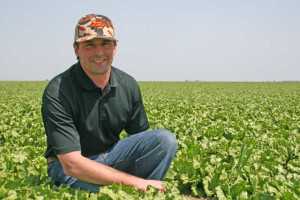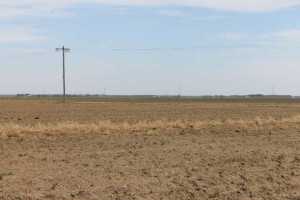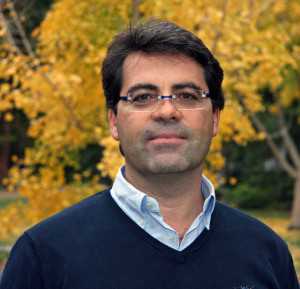The Impact Of Drought On Vegetable Production
Water is a precious commodity. Just ask California growers trying to navigate through a drought that is said to be one of the worst since the 1500s.
In March, the California Farm Water Coalition upgraded its estimate of acres growers will leave idle this year to 800,000, up from 500,000, because of a lack of water. According to USDA’s Drought Monitor, the drought in 95% of the state is being called “Severe” to “Exceptional.”
What can California and growers in the West do? Unfortunately, options are limited. Conservation is an obvious solution — and most growers in the West are already well down that road. During the last couple of decades, many have turned their attention to drip irrigation, which is considered to be the most efficient way to water crops.

Gene Miyao is a vegetable crop farm advisor at the University of California Cooperative Extension.
Gene Miyao, vegetable crop farm advisor at the University of California (UC) Cooperative Extension, says growers are able to produce more fruit with the same amount of water today than they were during the last major drought in 1976-1977. Miyao, who works primarily with growers of processing tomatoes, points out that production and efficiencies per acre of canning tomatoes has increased significantly in the last 35-plus years, as today more than 85% of the tomatoes are produced using drip irrigation systems.
“Growers are getting higher yields with the same amount of water,” he explains. “There is no appreciable amount of increased water demand by the plant to be more fruit productive.”
The increased efficiency comes with a high price tag, though. Drip systems cost about $1,000 per acre, Miyao says.
Limited Supply
Irrigation strategies aside, growers dealing with the current drought are taking a big hit. The ones suffering the greatest hardships, Miyao says, are in the Southern San Joaquin Valley, which includes Fresno, an area producing about 40% of canning tomatoes in the state.
“It appears that growers in the Fresno area will not get any of the federal or state water delivered
through the Central Valley Project (the state’s largest water delivery system) so they are going to be very dependent on ground water sources,” he says. “They will have to buy water wherever they can; and they will be majorly impacted.”

Garrett Patricio of California-based Westside Produce says if growers do not have water, they cannot farm.
Garrett Patricio of California-based Westside Produce, takes it a step further and says if you don’t have water, you can’t farm. Westside Produce acts as a middleman for about 20 cantaloupe growers in Firebaugh, Mendota, Dos Palos, Los Banos, and Huron.
“I don’t care how good your irrigation systems are or how well you can conserve, if you don’t have [water] to begin with, you aren’t going anywhere,” he says.
Control Of Reservoirs
Patricio doesn’t blame the entire situation on the drought, but also on those in control of the reservoirs and storage systems. About 80% of the precipitation occurs in the northern half of California, and he says that water needs to get to the storage systems in the southern half of the state for growers to benefit.
That isn’t happening, he says, because permission was not granted from the state to operate the pumps to convey the water past the Delta channel. In fact this year, Patricio says 1.5 million acre feet of water were swept into the ocean —wasted — as a result.
“Some [of people in charge of the water system] believe that a fish, the Delta smelt, is more important than food,” he explains.
“People can say all they want about the drought in 1976-1977, but back then, the Bureau of Reclamation and the Department of Water Resources delivered double the amount of water to growers than what was delivered this year. It is unfortunate because we have one of the most sophisticated water systems in the world and it is not being utilized properly.”
No Water, No Plants

When faced with drought conditions some California growers have opted to leave acres fallow.
Photo credit: Tom Turini
Whether it is drought conditions or an issue with the pumps in the state, Miyao and Patricio agree it doesn’t make sense to plant if you don’t have a secure source of water for the entire season. If the drought continues into 2015, Miyao says every grower will have to make some serious management decisions.
“If the grower has a limited water supply, and is projecting, for example, that he will have 1,000 acres of tomato production contracted but only 800 acres worth of water, he will need to either let 200 acres go fallow or plant another crop,” he says.
Miyao also says that tomato growers and others who have invested in permanent crops, such as almonds, will have to do what it takes to maintain the permanent crop.
“If you are a 1,000-acre tomato grower and you planted 300 acres of almonds a couple of years ago and those trees are not bearing fruit yet, your priority is the investment in your almond crop,” he explains. “You will want to keep it well supplied with water because it was a major investment.”
Avoid Deficit Irrigation Early
Miyao cautions growers against opting for a deficit irrigation strategy, which is defined as the application of water below the evapotranspirational needs of the plant. For example, he says growers only irrigating at 80% means the crop is under-irrigated by 20% of the plant’s water requirement. Deficit irrigating is especially harmful during the drought-sensitive growth stages of a tomato crop at flowering and early fruit sizing.
“Even backyard gardeners know if they water stress their plants, they are going to see, depending on weather conditions, a lot of blossom end rot with scabby dark tissue at the bottom end of the fruit,” says Miyao. “That is a cause and effect from water stress.”
If you cannot fully irrigate your crop, he says, at the very least get it to the stage of early fruit ripening, which is 30 to 45 days from anticipated harvest.
“At that point deficit irrigating doesn’t have as great of an impact on yield. It has been well documented over many decades that the management tactic of deficit irrigation during early fruit ripening increases sugar (Brix) level,” he says.
10 Tips To Help You Maximize Water Use Efficiency

Daniele Zaccaria
Daniele Zaccaria, assistant cooperative Extension specialist in the Department of Land, Air and Water Resources at the University of California-Davis, offers some tips to help you get the most from your irrigation water.
1 Consult with farm advisers in your area. They are usually a good source of information for irrigation management practices.
2 Plan for crop planting timing strategically, as early or late planting may help growers avoid the highest water-demanding periods, or reduce the length of the crop cycle, thus requiring less water to achieve profitable yields.
3 If you can, plant short-season varie-ties (varieties characterized by shorter crop cycle) and earlier-harvesting varieties.
4 Remove cover crops and weeds earlier in the season, as they uptake water from the soil. Incorporate cover crops and weeds in the soil to increase the water holding capacity and water retention by the soil.
5 Apply water according to real needs of the crop with small amounts and high frequency, and with application rates adequate to the soil infiltration rates.
6 Minimize the water losses by soil evaporation, surface runoff, and deep percolation. Make sure water is not applied past the root-zone depth. Use soil moisture monitoring for proper application timing and volumes
7 Use water conservation techniques, such as conservation tillage, reduced tillage, management of residues from the previous crop, and mulching.
8 In case of limited water supply, use regulated deficit irrigation, i.e. reduce the irrigation amounts with respect to needs during crop stages that are not sensitive to water stress.
9 Once every two to three years, have your irrigation system evaluated by public or private
Mobile Lab Services to get information about distribution uniformity and application efficiency.
10 Regularly inspect and maintain your irrigation system at least every season, or multiple times along the irrigation season.
Lipman Goes High Tech To Conserve Water
In the Southeastern U.S., the water situation is completely different — at least this year. At Lipman, a fresh market tomato producer in Immokalee, FL, an ample water supply is available, but the farm uses conservation measures to be good stewards of the land.

Randy Moss
According to Randy Moss, irrigation and technology specialist for Lipman, the operation began using drip irrigation in 1985 and has seen a reduction in water use by 70%.
“We are interested in saving water but we want to produce a good crop,” Moss explains. “We went to drip because it is a better way to farm. But we also know there is an increasing demand on water supply as more and more people move to Florida.”
To date, all of Lipman’s farms are integrated with solar-powered irrigation controls and micro-irrigation technology. This allows the farm to “get the best bang for our buck without excess or being wasteful. Plus, we have a finger on the pulse of our farms 24 hours a day, and that is where automation pays in the long run,” he adds.
For more than 10 years, Lipman has incorporated advanced ET (evapotranspiration) adjustment technology into its irrigation program. According to Moss, the technology has helped with more than water conservation, saying its main benefit is reporting.
“We are able to monitor the actual consumption of fertilizer and water and what was applied to the crops,” he adds.

Justin Roberson
The farm also uses high-tech equipment like phytomonitors to measure plant activity and growth. The end result is they are able to adjust their irrigation regimens without causing crop stress. If you can prevent a crop from going into a stress situation, you will get higher yield, adds Justin Roberson, manager of Production Systems and Sustainability.
“Using high-tech equipment, we are able to reduce our input and increase our output,” Roberson explains. “Another side note to this is it ties in very closely with our water policy. We breed our own seed and another component we look for is a seed and variety that grows well. We want to see an increased output with decreased input.”
All of Lipman’s conservation efforts fall under the sustainability umbrella, which is an integrated value base of the company’s operations, says Roberson.
“Whether it is water conservation or a reduction in energy usage, we believe the idea of stewardship and conserving resources is good for the environment and to our bottom line,” he adds.










